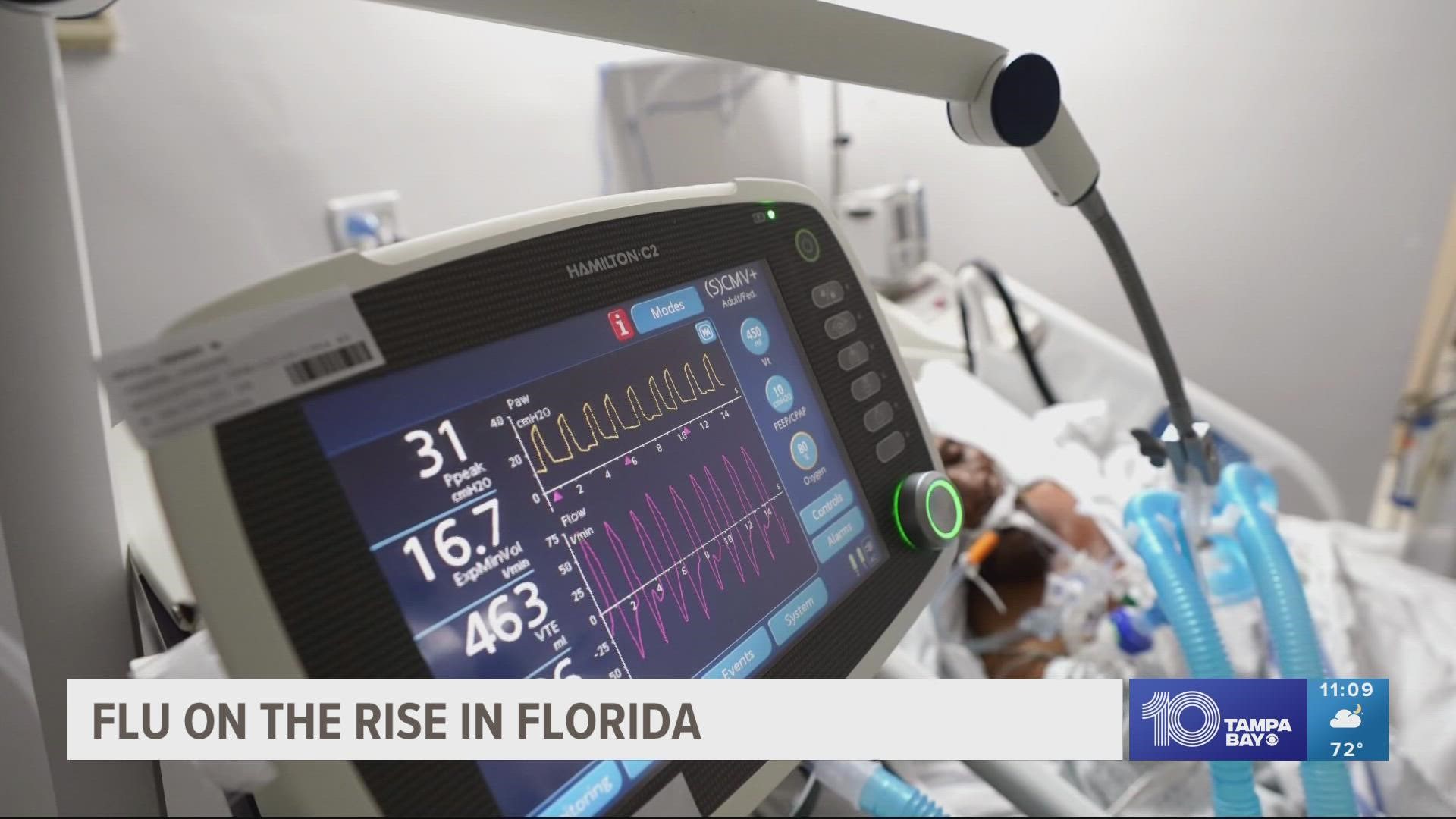ST. PETERSBURG, Fla. — Coughing and sneezing right before the holidays? Health officials say seasonal influenza activity is heightened across the U.S. and the coronavirus can still be contracted.
A multitude of factors are sending Americans to the doctor and taking COVID-19 at-home tests to see what has them feeling sick this November. There is even an elevated search for topics such as "covid vs flu vs allergies," according to Google Trends.
So which is it? The symptoms of allergies, the flu, a cold or COVID-19 can feel similar, so here is what health experts say about learning the differences between them.
COVID-19
COVID-19 is a contagious respiratory illness, and so is influenza (flu), But the two are caused by different viruses, the Centers for Disease Control and Prevention says. COVID-19 is linked to the infection of coronavirus (SARS-CoV-2) and the flu is caused by the flu virus.
The CDC says it can be difficult to differentiate between the flu and COVID-19 symptoms because they have similar signs and symptoms. Specific testing can confirm a diagnosis, health officials say.
Symptoms
- Fever or feverish/having chills
- Cough
- Shortness of breath, difficulty breathing
- Fatigue
- Sore throat
- Runny or stuffy nose
- Muscle pain, body aches
- Headache
A key difference between COVID-19 and the flu is people suffering from COVID-19 could take longer from the time of infection to experience symptoms than if they have the flu, the CDC says.
The flu (influenza)
The flu is also a contagious respiratory illness that infects the nose, throat and lungs. Typically a person with the flu will experience symptoms within one to four days after infection, the CDC reports, "Flu symptoms usually come on suddenly."
There are two main types of flu viruses, types A and B. As of Nov. 12, the most frequently reported virus was the flu, mostly type A.
Symptoms
- Fever or feverish/chills
- Cough
- Sore throat
- Runny or stuffy nose
- muscle pain, body aches
- Headache
Cold
A common cold is also caused by viruses, but not the same as COVID-19. Most often it's caused by rhinoviruses, according to the Mayo Clinic. Each of these viruses spread in similar ways and cause the same symptoms however there are some differences.
Symptoms of a cold tend to be mild, News in Health says. "You may have a runny nose, cough, congestion, and sore throat. But you won’t usually have the aches and fever that are common with COVID-19 and flu."
People are most likely to get a cold by infections spread through the air and close personal contact, the CDC says.
"There is no cure for a cold. To feel better, you should get lots of rest and drink plenty of fluids," the CDC says.
Symptoms
- Sneezing
- Stuffy and runny nose
- Sore throat
- Coughing
- Mucus dripping down throat
- Watery eyes
Allergies
Allergies have similar symptoms but carry a strong difference when it comes to how long it lingers. Symptoms are caused by your immune system overreacting to things in the environment such as pollen, dust, mold and pet dander, Emerson Hospital reports. Allergies can cause a runny nose and sneezing, NIH says, but it's not contagious and allergy symptoms normally stop when you're no longer exposed to the cause.
Breathing problems are also not a symptom of allergies unless you have asthma.
Symptoms
- Sneezing
- Runny or stuffy nose
- Itchy or watery eyes
- Itchy nose or ears
- Post-nasal drip
- Mild fatigue
Health officials say the best way to reduce your risk from seasonal flu or COVID-19 is by getting vaccinated, or getting your COVID-19 booster.

